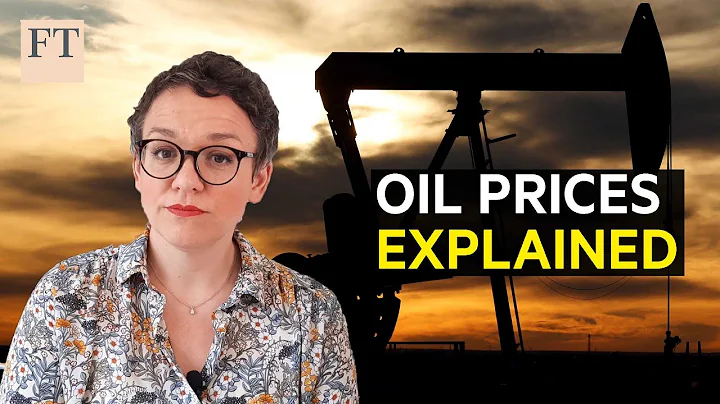Overnight, the main crude oil futures of West Texas Intermediate Crude Oil (WTI), the benchmark for U.S. crude oil, closed down $4.02, or 3.66%, at $105.76 per barrel; the main crude oil futures of Brent , the global crude oil benchmark, closed down 3.42. The US dollar fell 3.04% to US$109.03 per barrel.
This is the second consecutive day that international oil prices have fallen sharply, and June also closed the only negative monthly line in the first half of the year: calculated based on the most active contract, the main WTI crude oil futures fell by 7.8% in June.
In the first half of 2022, international oil prices rose by 41%. But in recent days, some changes are taking place, both in terms of the macroeconomic environment and the fundamentals of crude oil itself - U.S. demand for refined oil has fallen to multi-year lows, and the Organization of the Petroleum Exporting Countries and its allies (OPEC+) approved an August oil production increase plan. , U.S. President Biden claimed that he "will require countries in the Gulf region to increase oil production." Russia's oil production jumped to the highest level since March...
What is the trend of international oil prices in the second half of the year? Chen Jia, a researcher at the International Monetary Institute of Renmin University of China, said in an interview with a reporter from China Business News: "Oil prices are one of the core issues of global political economy. Its trends are closely related to the international order and cause and effect each other. There are at least three major categories. Dominant factors, as well as various 'X factors', will have an impact on the trend of crude oil."
Professor Gao Xinwei of the School of Economics and Management of China University of Petroleum told China Business News: "I think international oil prices will continue to rise in the second half of the year, basically. Various factors above support this judgment, and the rise in international oil prices has not yet come to an end. "

The crude oil supply pattern has quietly changed.
From the perspective of crude oil supply, some fundamental changes are quietly taking place.
On Thursday local time, OPEC+ issued a statement stating that the organization approved a plan to increase production by 648,000 barrels per day in August, restoring the last part of the 9.7 million barrels per day production capacity that was closed more than two years ago. Meanwhile, OPEC+ postponed discussions on next steps. According to the statement, OPEC+ will meet again on August 3.
Amos Hochstein, senior adviser for energy security at the U.S. State Department, said that the United States welcomes OPEC+’s decision to speed up oil supply growth, calling it a “major change in attitude.” He also expressed the hope that OPEC+’s decision is the “first step” for its supply policy, and will be followed by a “second step”. The United States is talking to OPEC countries that still have idle production capacity, and the United States will evaluate whether it is necessary to Strategic petroleum reserves will be further released after October.
However, many analysts are skeptical about whether OPEC+ can increase production. Suvro Sarkar, an energy analyst at DBS Bank in Singapore, said: "In fact, many OPEC members, especially some African members, are very poor in even meeting current production quotas due to insufficient investment. Difficulties, and OPEC's overall spare capacity is still insufficient." Hakan Kaya, senior portfolio manager at international asset management company Neuberger Berman, also believes that OPEC+'s decision either shows that the group "cannot increase production. "raise it beyond the planned level", or it shows that it "doesn't care whether it meets the needs of Western countries."
U.S. President Joe Biden, who is suffering from high inflation, told a news conference in Madrid, Spain, on Thursday that he will ask for the alliance when he meets with Gulf Cooperation Council countries during his visit to Saudi Arabia next month. Increase oil production. When asked how long Americans would have to endure high gas prices, Biden's answer was "as long as necessary."
Biden continues to blame Russia for high oil prices in the United States. However, according to U.S. media calculations of data from CDU-TEK, a subsidiary of the Russian Ministry of Energy, Russian oil producers have increased production to the highest level since March: average daily production in the first 29 days of June was 10.71 million barrels, higher than in May. out 4.7%, but still below the level before the Russia-Ukraine conflict. Russian Deputy Prime Minister Alexander Novak also told Russian media that oil production has recovered and (in June) has almost returned to February levels.
In addition, U.S. gasoline inventories unexpectedly increased significantly, indicating that U.S. demand is showing signs of slowing amid high oil prices, with the four-week rolling average of gasoline demand falling to the lowest seasonal level since 2020. Moreover, U.S. domestic crude oil production increased by 100,000 barrels to 12.1 million barrels per day, the highest since the week of April 24, 2020.
How will the international oil price trend in the second half of the year?
Under the influence of multiple factors, can the international oil price continue to be strong in the second half of the year?
A new Reuters poll of 34 economists and analysts showed they generally expect Brent crude oil prices to average $106.82 a barrel in 2022, the highest forecast level so far this year, while 5 The consensus forecast in March was $101.89 per barrel; the consensus forecast for U.S. crude oil prices in 2022 was $102.82 per barrel, compared with the May forecast of $97.82.
The U.S. Energy Information Administration (EIA) said last week that global remaining crude oil production capacity in May 2022 was less than half of the average monthly level in 2021 as Western countries imposed sanctions on Russia over the Russia-Ukraine conflict. It is understood that Russian crude oil exports account for approximately 7% of global supply.
Mizuho Securities U.S. Energy Director Robert Yawger said: "As long as the Russia-Ukraine conflict continues to hinder the world's much-needed crude oil supply, crude oil prices will continue to rise."
Gao Xinwei's views are close to Yawger, he told China Business News Reporter: "The trend of international oil prices mainly depends on changes in speculative positions. Short positions increase, exceed long positions, open positions decrease, and trading volume reverses, the price will end and fall. But at present, basically all factors Supporting the continued rise in oil prices, I think the international oil price has not yet come to an end.”
Chen Jia’s analysis dimension is more diversified. He believes that the determinants of supply and demand in the international crude oil market in the second half of the year are consistent with the first half of the year. “The biggest influencing factor. , is the pattern of global major power relations; the second largest influencing factor is the geopolitical pattern based on major power relations; and the third largest influencing factor is the deep influence of global financial markets. "However, there are internal changes in each factor.
"The interference of the old U.S.-led system in the balance of crude oil supply and demand has always been the dominant aspect that crude oil market analysts are most concerned about. This factor has undergone major changes recently. To put it simply, there are three levels: First, the U.S.'s recent interference in the balance of supply and demand of crude oil There has been a major change in the attitude towards replacing fossil energy sources such as shale, photovoltaic and wind power; secondly, and the EU have new disputes over the short-term stabilization of oil supply and ensuring stable inflation expectations; thirdly, the energy supply guarantee network of developing countries such as China With new pillars. These factors are crucial to stabilizing the short-term crude oil market. Based on this long-term factor, we can initially judge that crude oil prices have a local small peak in a very narrow time range." Chen Jia told China Business News. the reporter said.
The geopolitical pattern based on the relationship between major powers, to be precise, the current conflict between Russia and Ukraine, and the peace situation in parts of the Middle East, including Afghanistan and other places, are important factors that affect international oil prices in the short term. Chen Jia believes: "The biggest feature of this factor is that it changes with each passing day, so you can imagine how difficult it is to make interval predictions."
The profound impact on the global financial market is a factor that is relatively weak in the traditional analysis field and is often ignored. Chen Jia told China Business News: "For decades, the financial industry has continuously developed new product applications in the energy field, especially the crude oil market, and a series of financial derivatives in the energy sector have become increasingly complex and precise. Once the crude oil market and financial derivatives deepen The complexity of integration is far beyond expectations and cannot be fully grasped by judgment based on experience. From this factor, the crude oil market situation in the second half of the year can be determined relatively clearly, because it includes oil price points and expectations. A series of factors that everyone cares about are fully reflected by market indicators and liquidity. Judging from the current price trend, oil prices, like most commodities, are at a low level due to the Federal Reserve overspeeding interest rate shrinking. Deeply volatile range. "
These three major categories of leading factors, plus the supply and demand factors of oil production capacity, basically cover the main factors that determine oil prices.However, Chen Jia further analyzed that there are still many "X factors" that affect the trend of oil prices, "including but not limited to the in-depth evolution of the global food crisis that disturbs the global bulk market, the speed of advancement of major countries in the field of environmental protection - this is Including the contradiction (policy) of the EU that both encourages and restricts oil, the replacement process of oil trucks in various countries around the world, whether financial institutions can do a good job in risk control while is short is long in the oil market, and the developed market's response to the oil derivatives market Risk prevention and control efforts, etc. "Chen Jia concluded to a reporter from China Business News, "The oil crises in history are often caused by the sudden action of unexpected variables under the influence of many large leading factors."





















